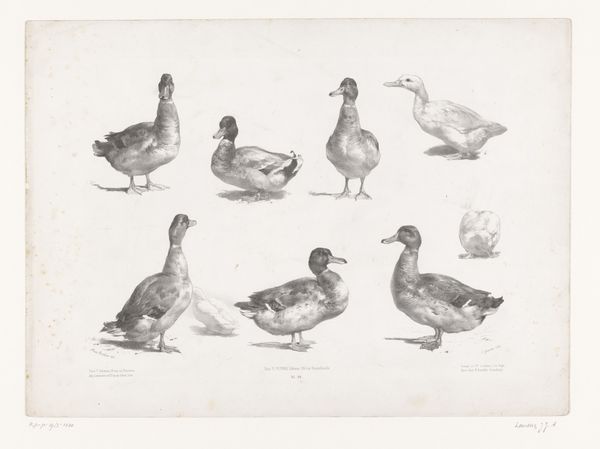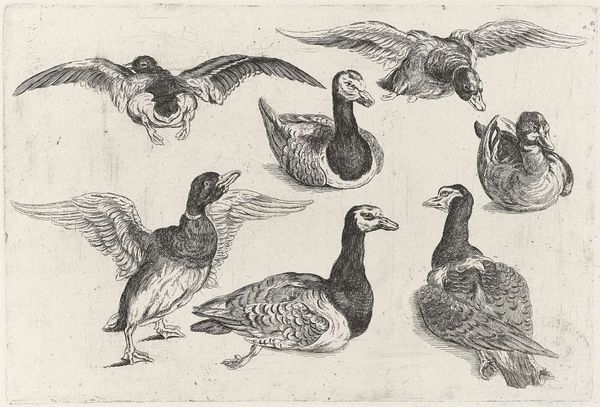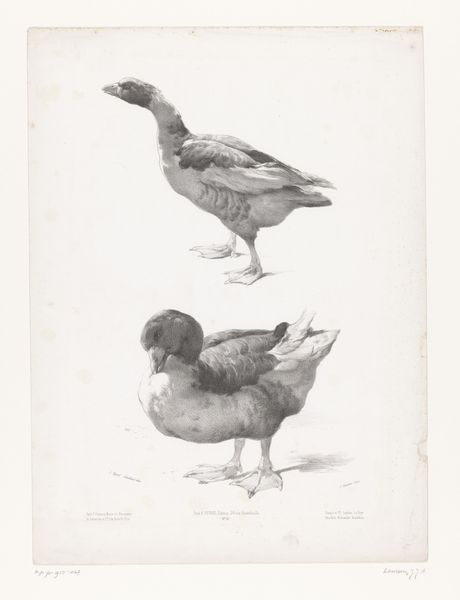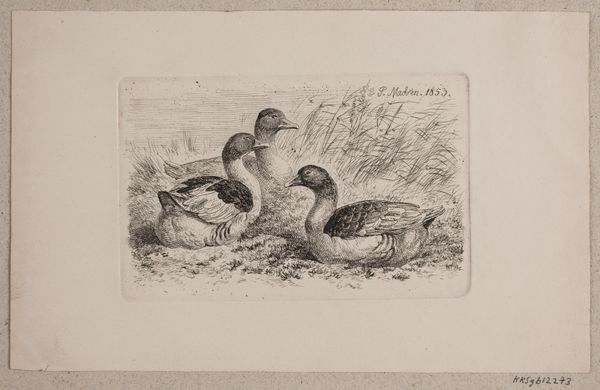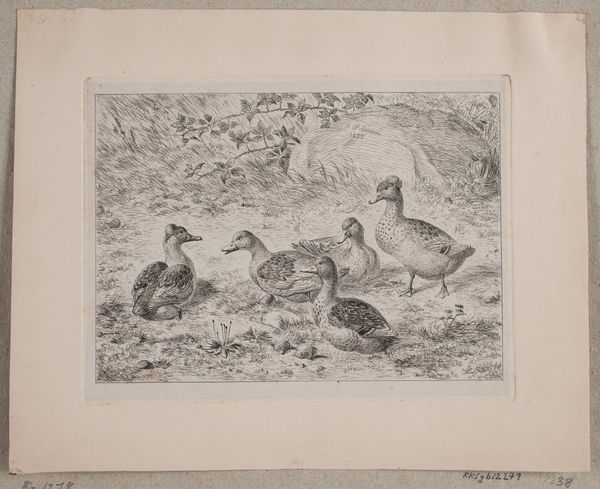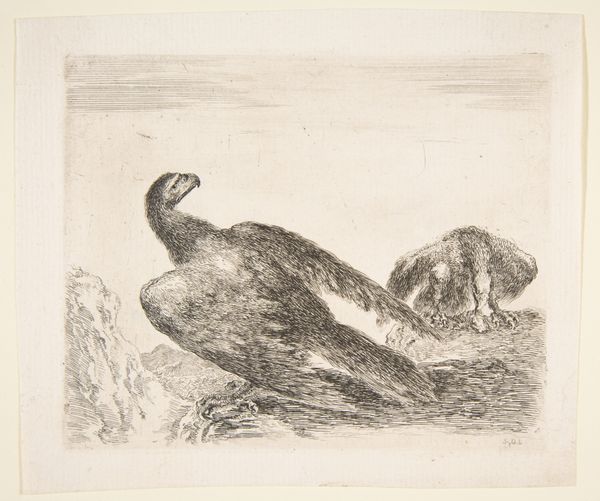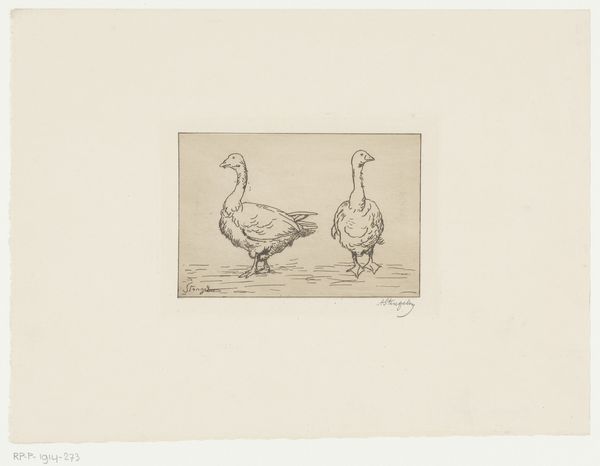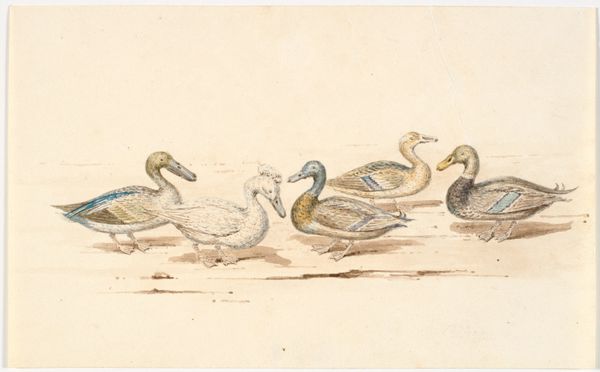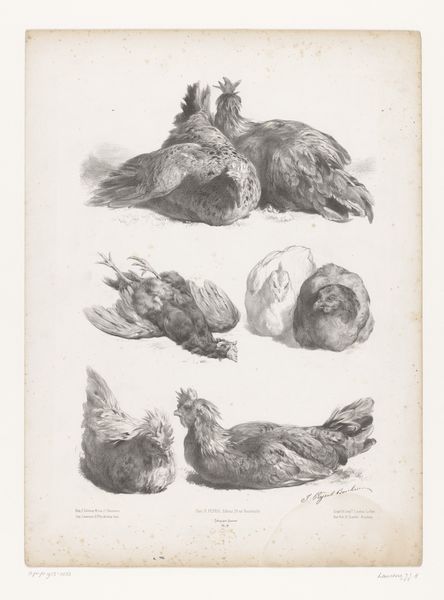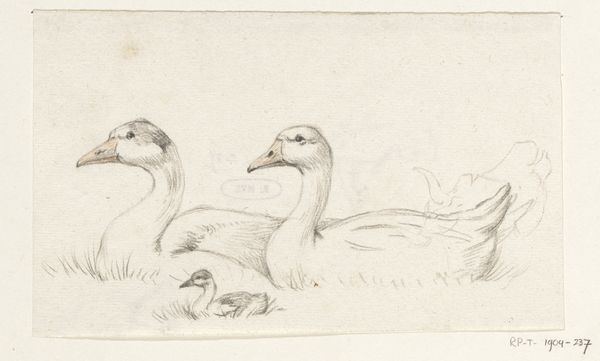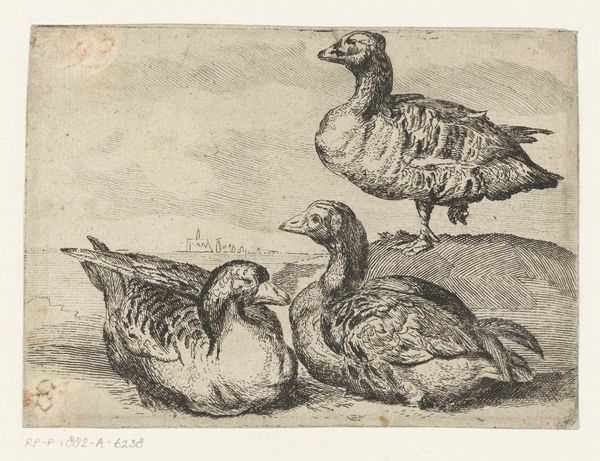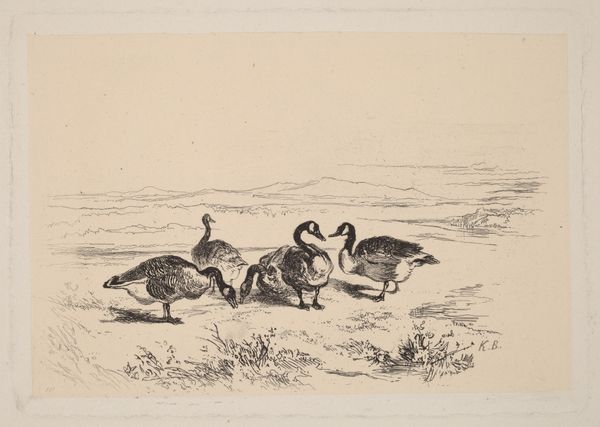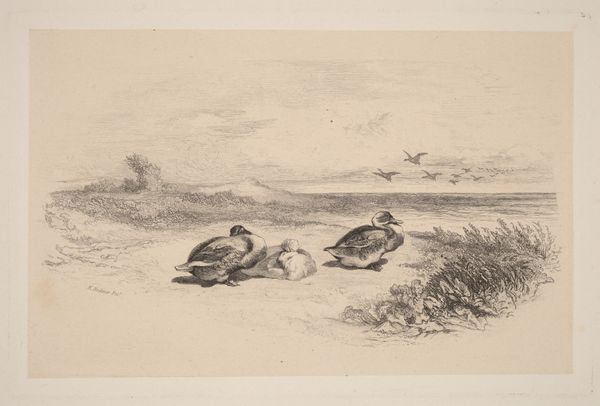
drawing, paper, dry-media, pencil
#
drawing
#
light pencil work
#
pencil sketch
#
landscape
#
paper
#
dry-media
#
pencil
#
genre-painting
#
watercolor
#
realism
Dimensions: height 347 mm, width 473 mm
Copyright: Rijks Museum: Open Domain
Editor: This is *Studies van groepen liggende eenden* by Jules Laurens, made sometime between 1865 and 1878, using pencil on paper. The groupings of ducks give it an almost decorative quality. What jumps out at you when you look at it? Curator: The sheer number of ducks presented, and their variations, strikes me. In the mid-19th century, the rise of Realism coincided with increased scientific observation. Do you think this could be connected to scientific studies from that era, perhaps influencing the artist's intent to document and classify different types or poses of ducks? Editor: That's an interesting perspective. I hadn’t thought about the scientific context at all. It feels like he’s just captured them in their natural environment. Does the presentation on paper impact its perceived "public role?" Curator: Absolutely. Presenting these 'studies' on paper immediately connects it to the academic or even amateur scientific tradition, differentiating it from, say, a monumental oil painting intended for public display. The accessibility of the medium democratizes the image somewhat. It invites close study, akin to flipping through the pages of a naturalist’s sketchbook. But were these studies displayed publicly in Laurens' lifetime? That question is at the core of our historical interpretation. Editor: That makes me wonder, where would art like this have typically been displayed then? More private collections or salons? Curator: Salons, perhaps, but more likely print rooms, smaller exhibitions, and potentially illustrated publications. It's also vital to investigate who the intended audience was. Wealthy landowners? Fellow artists? Dissemination routes significantly dictate the image's political and cultural impact. Editor: It's fascinating how shifting the context changes everything. Now, I can see that these sketches might tell us more about how people at that time viewed and classified the natural world. Curator: Exactly. By examining its social and institutional history, we begin to uncover the deeper currents that informed both its creation and its reception. It's all a matter of asking the right questions, isn't it?
Comments
No comments
Be the first to comment and join the conversation on the ultimate creative platform.
